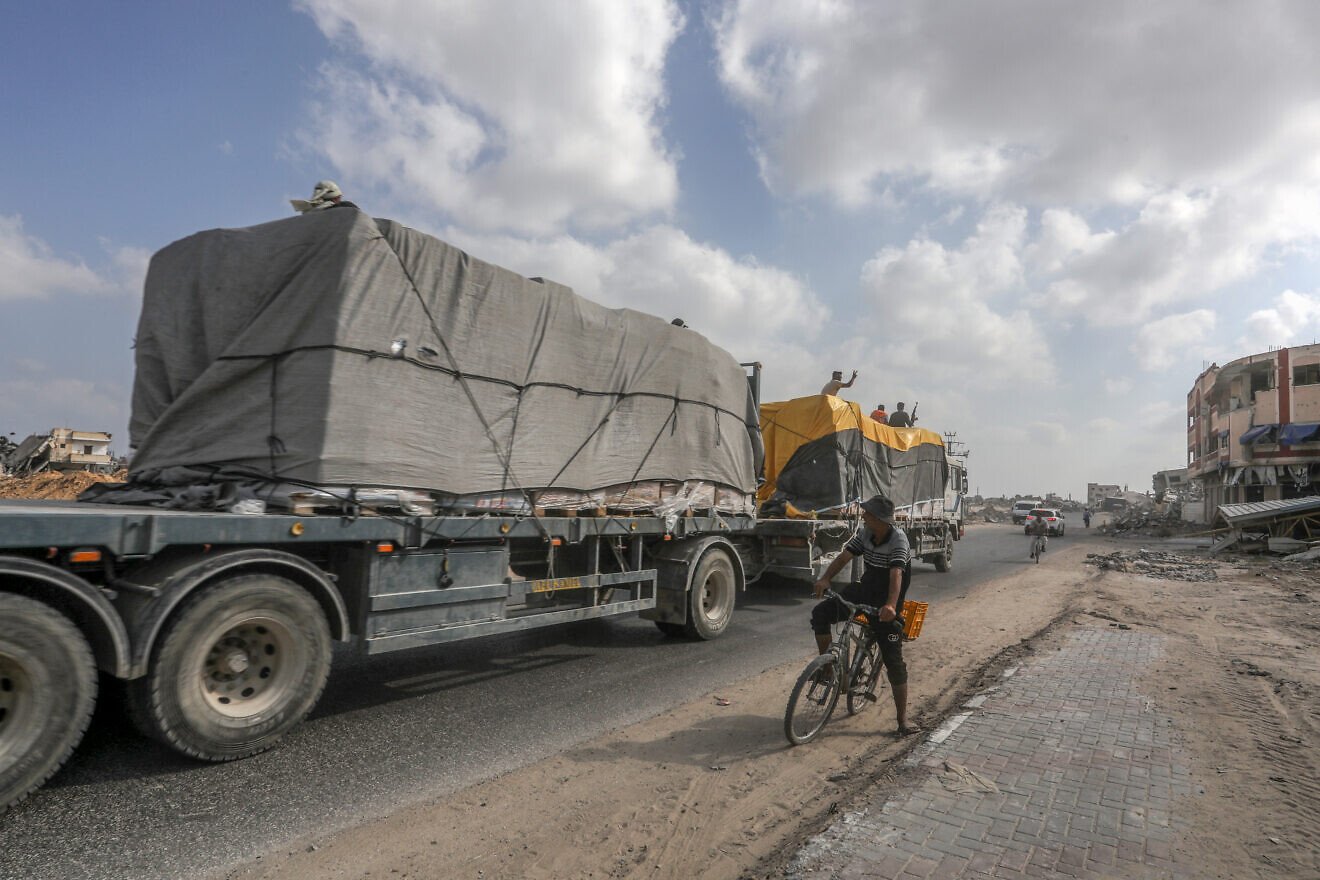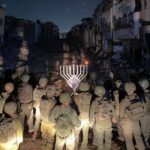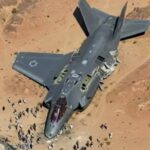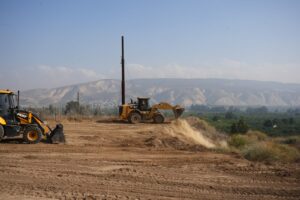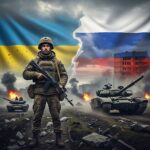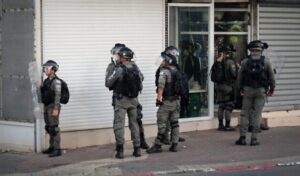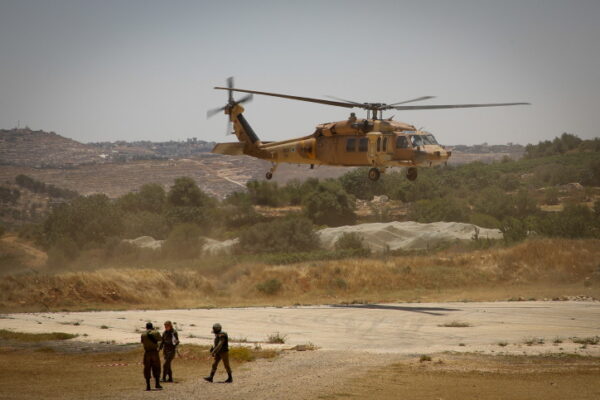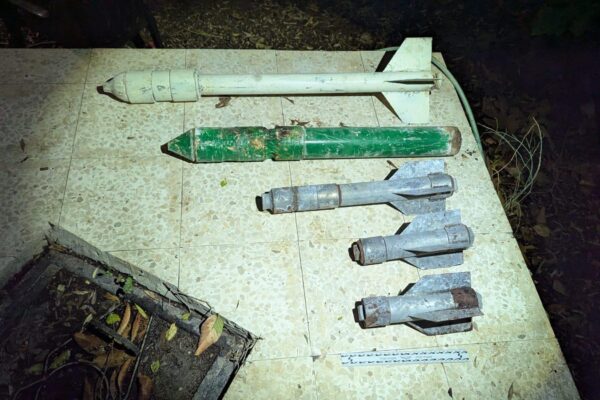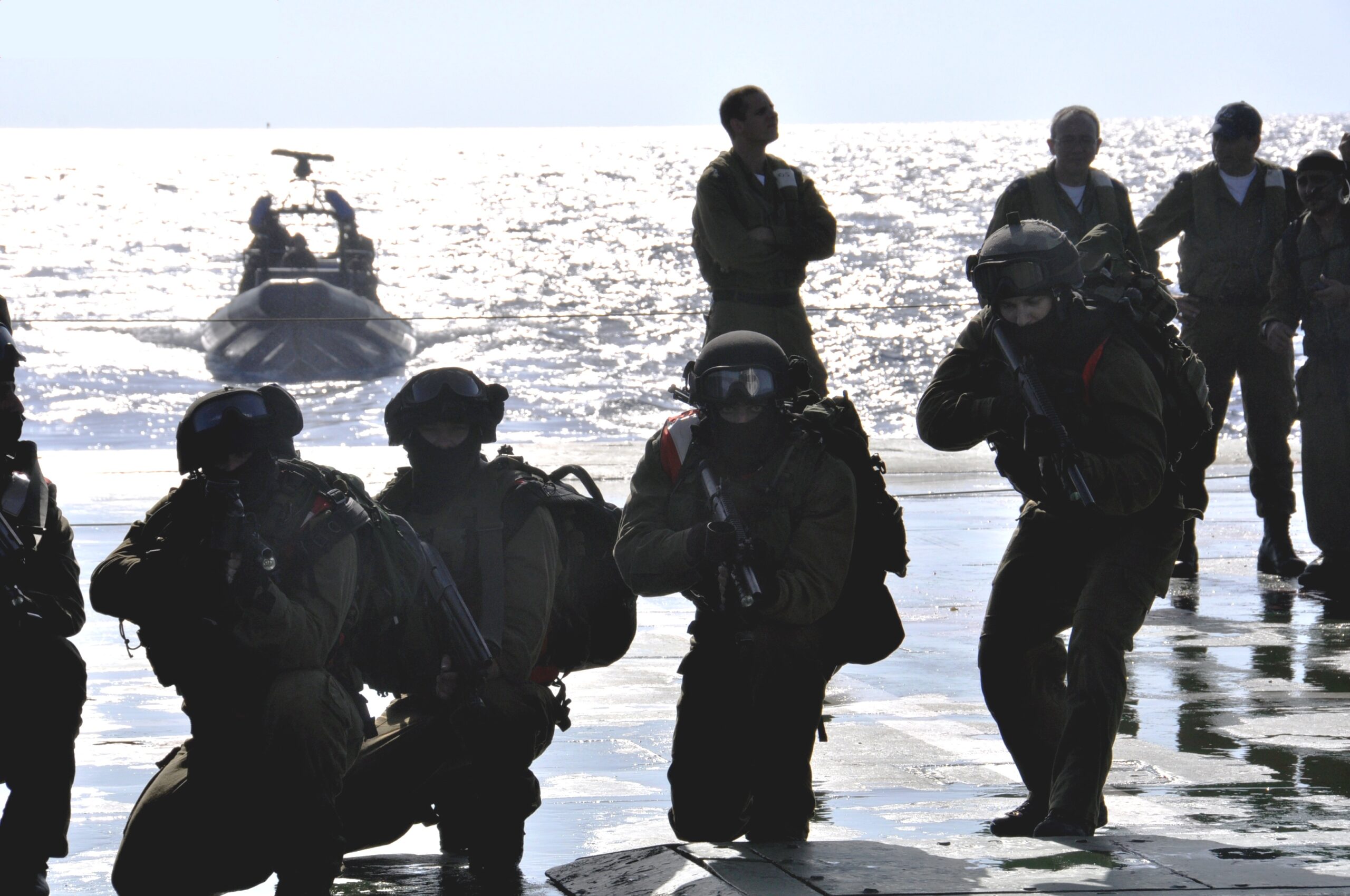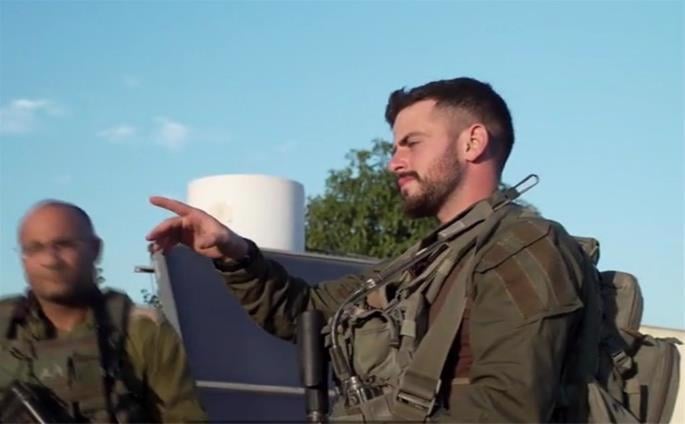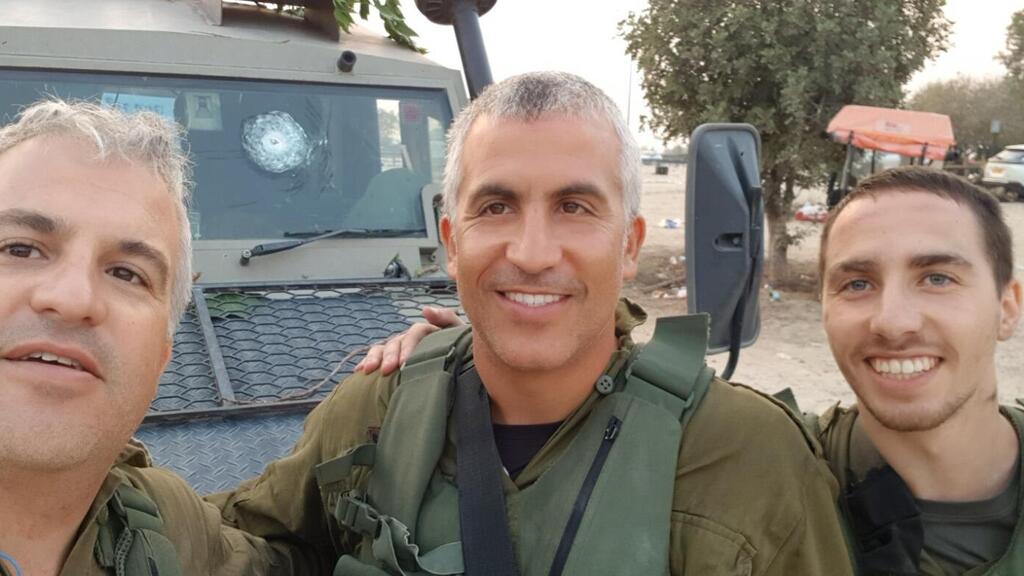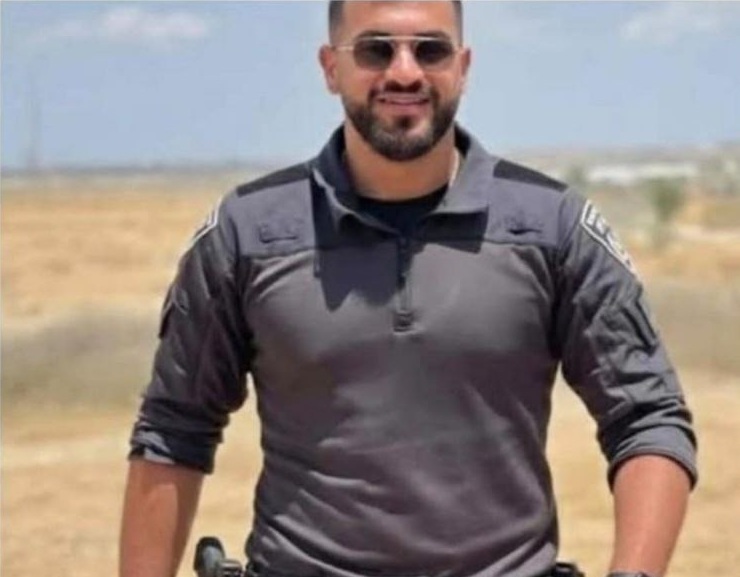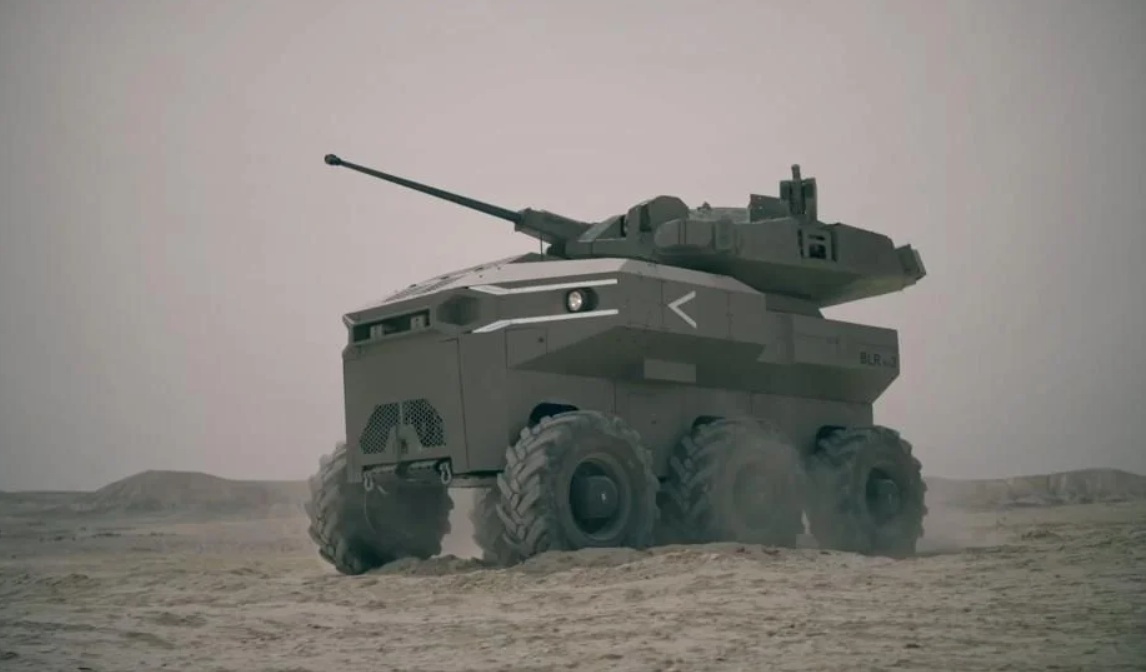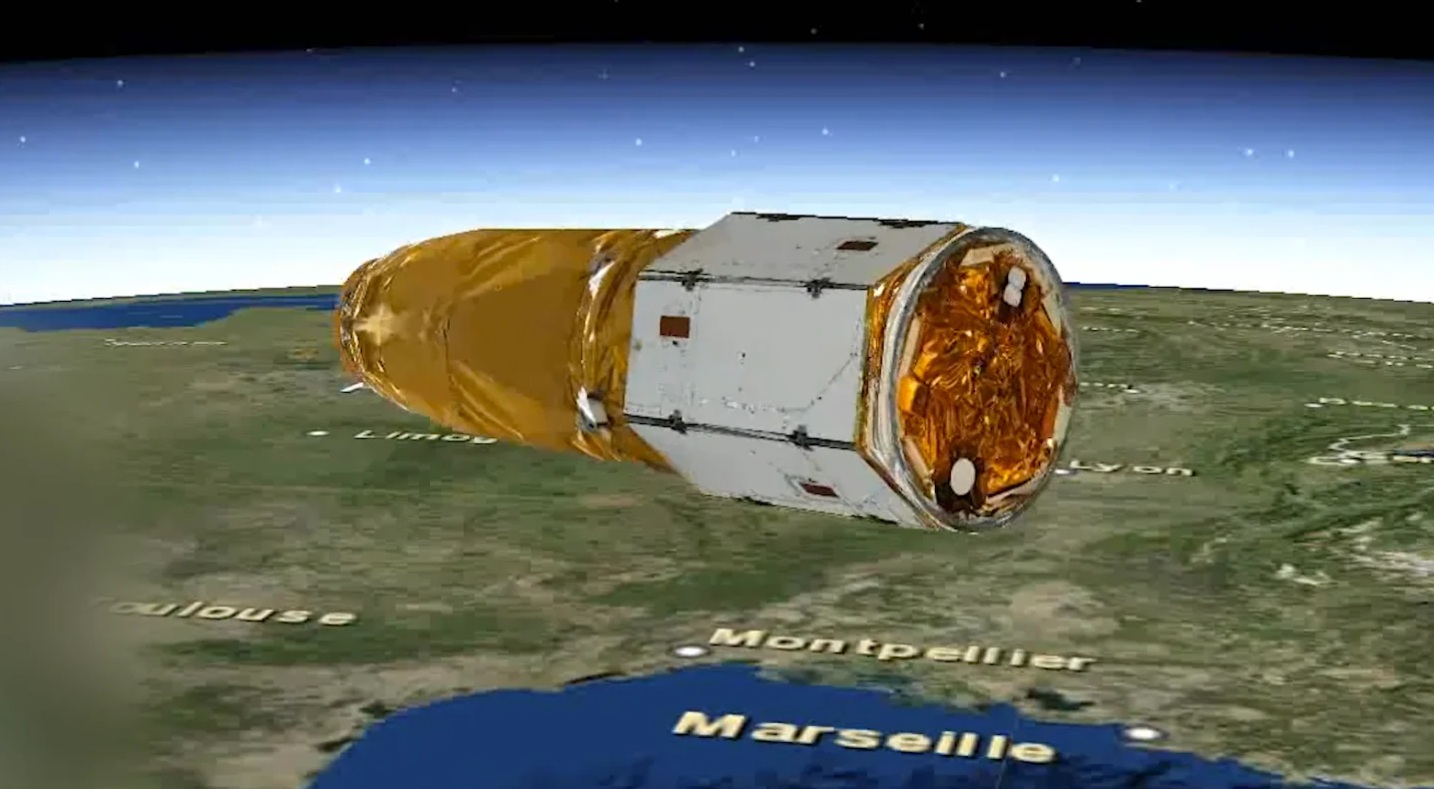By utilizing alternative routes, as well as Gate 96 near Netzarim in northern Gaza, the IDF has created safer pathways for aid deliveries, decreasing exposure to looters.
By Yaakov Lappin, JNS
The Israel Defense Forces has in recent days introduced a new arrangement to boost security for the passage of humanitarian aid into Gaza, directing aid convoys on the first stage of their journey through Israeli-secured routes in the Strip.
Over this period, 400 aid trucks entered the Gaza Strip in four convoys of 100 trucks each, following routes along the IDF-controlled Philadelphi Corridor and the Gaza-Israel border road.
This initiative has markedly decreased hijackings by Hamas terrorists and criminal gangs, meaning that more aid is reaching Gazan civilians.
Aid trucks entering Gaza have been highly vulnerable to armed looters, with drivers frequently being wounded in hijackings.
Hamas and local criminal families frequently intercepted these convoys, seizing valuable supplies and reselling them on the black market at exorbitant prices.

On the Gaza side of the Kerem Shalom Crossing in the southern part of the Strip on Thursday, trucks and forklift operators—the latter being Gazan employees—were busy loading and unloading goods that had passed a security screening.
An IDF official explained: “Hamas people, but also I would say … mafia clans, were coming until today with guns, with weapons, and looting and stealing these goods and reselling them to incredible prices on the market.”
The scale of the problem was immense. By some estimates Hamas profited by as much as half a billion dollars. These funds enabled the group to bolster its military capabilities, including funding recruitment and recruiting new terrorists in northern Gaza.
However, the new convoy system could form a partial solution. Trucks now travel under safer roads from Kerem Shalom to designated entry points into Gaza, minimizing opportunities for theft.
Despite these improvements, challenges persist. At Kerem Shalom Crossing, large quantities of humanitarian aid remain stuck because a number of aid organizations have refused to send drivers into Gaza, citing safety concerns.
“Some of the drivers are injured,” an IDF source said on Thursday. That same day, the military got word of a driver who had been shot and wounded by looters.
With over 800 trucks’ worth of supplies stranded at the crossing, the impasse underscores the ongoing risks faced by aid workers in Gaza.
According to some reports, international aid organizations have even paid off looters to avoid attacks, particularly on shipments of essential goods such as medical supplies.
Here is an inside look into the Gazan side of the Kerem Shalom Crossing with COL Abdullah, a commander at @cogatonline. pic.twitter.com/G2zztnfSqD
— Israel Defense Forces (@IDF) December 20, 2024
Col. Abdullah Halabi, head of the IDF’s Coordination and Liaison Administration for Gaza, highlighted the comprehensive screening and monitoring procedures now in place.
“All of the humanitarian aid coming to Kerem Shalom has been inspected by the Israeli side, and we’re delivering them to the Gazan side from here,” he stated.
Halabi also emphasized the IDF’s efforts to increase aid deliveries. In December alone, an average of 250 trucks per day entered Gaza, including 50 to the north and 200 to central and southern Gazan areas.
By utilizing alternative routes, as well as Gate 96 near Netzarim in northern Gaza, the IDF has created safer pathways for aid deliveries, decreasing exposure to looters.
“We escort them from [the] Philadelphi Corridor until the Rashid Road [south of Gaza city] … then they succeed to take the cargo [via] another road,” said Halabi.
The cargo goes to warehouses in Gaza operated by international aid organizations, and from there to the Al-Mawasi humanitarian zone, as well as to population centers in Deir el-Balah and Nuseirat in central Gaza, and other areas.
Some aid groups, such as UNICEF, the World Central Kitchen, Save the Children and others have successfully coordinated with the IDF to deliver essential supplies.
Others, like the U.N.’s World Food Program and the United Nations Relief and Works Agency for Palestine Refugees in the Near East (UNRWA), have not succeeded, leaving vital aid unused for months.
“The main obstacle or the main challenge is the international community’s capabilities [for distribution],” said Halabi. “When they will send more trucks, we will bring more trucks to Kerem Shalom.”
The IDF has urged aid organizations to increase their efforts, offering additional infrastructure to expedite deliveries. However, the risk of violence remains a deterrent for many.
The IDF has repeatedly stated its commitment to facilitating humanitarian aid for Gaza’s civilian population, despite ongoing hostilities.
“Israel has, first and before anything else, [an] interest … [to] facilitate what we call humanitarian assistance getting into the Gaza Strip,” an IDF officer explained.
“Every day, we push the organizations to bring more trucks,” said Halabi.


